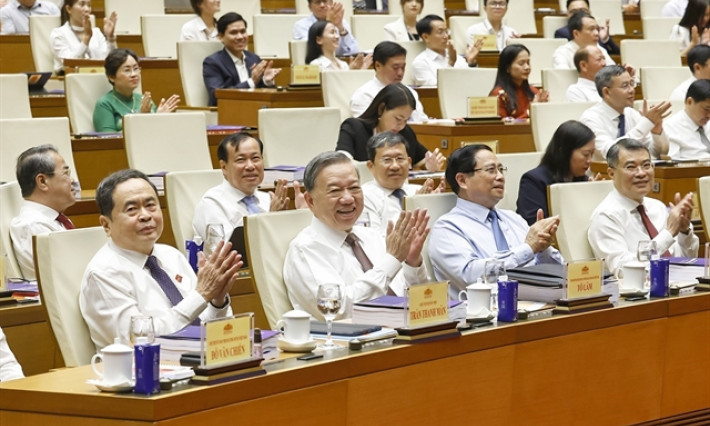National GDP to increase in Q3 but challenges remain in meeting socio-economic targets
It is forecast that in 2023, Việt Nam’s GDP growth will exceed 5 per cent, while trade surplus will reach approximately US$15 billion. 
The national gross domestic product (GDP) in Q3 is estimated to have increased by 5.33 per cent compared to the same period last year, according to government reports presented at the 27th session of the National Assembly (NA) Standing Committee on Monday.
GDP growth in Q1 and Q2 was 3.28 per cent and 4.05 per cent respectively.
It is forecast that in 2023, Việt Nam's GDP growth will exceed 5 per cent, while the trade surplus will reach approximately US$15 billion.
Ten out of fifteen criteria set for socio-economic development have also been met.
The government is pushing for economic restructuring in line with growth model transformation, improving productivity, quality, and efficiency as well as the economy's competitiveness, in addition to socio-cultural growth.
In the last nine months, the average income increased by 6.8 per cent compared to the same period last year.
Regarding the implementation of the five-year plan for the 2021-2025 period, the government report stated that the country overcame challenges related to the pandemic to achieve significant results.
The macroeconomy is stable, while inflation and major balances of the economy are controlled.
The three-year State budget deficit from 2021 to 2023, which includes expenses for socio-economic recovery and development, is estimated at 3.6 per cent of the GDP and is within the limit set (3.7 per cent of the GDP).
The inspection agency believes that five out of 15 socio-economic criteria will fail to meet the targets, while the economic growth rate saw a significant decrease, said Chairman of the NA Committee on Economy Vũ Hồng Thanh.
The key growth drivers of investment, exports, and consumption are reported to face systematic challenges caused by the lack of long-term direction and prompt intervention concerning green transformation, energy efficiency, and circular economy.
Meanwhile, although the deposit and lending interest rates decreased, as of 21 September, outstanding credit debt only rose by 5.91 per cent compared to the end of 2022.
Businesses are facing multiple challenges regarding the markets, cash flows, administrative procedures, and infrastructure, while production and logistics costs continue to rise.
The disbursement of public investment capital has seen improvements, but the progress was not as expected with only 51.38 per cent of the plan completed in the last nine months.
The NA Committee on Economy highly regards the government's efforts in realising the economic restructuring plan for the 2021-2025 period, especially as the global context remains unstable and complicated.
The committee also seeks clarification on the difficulty in achieving 13 out of 27 criteria in the plan, as these are significant goals related to restructuring public institutions, labour productivity, financial market development, land market, science and technology, and business development.
According to the NA economic committee, while economic recovery in 2024-2025 might be better than in 2023, it is challenging to reach the average growth target of 6.5 to 7 per cent for the 2021-2025 period, or higher than the 2016-2020 average of 6.25 per cent as per the NA resolution, especially in the complicated global context.
For 2024, the committee proposed a more thorough assessment and feasibility evaluation of the GDP growth target, the implementation of targets for the whole term as well as estimations of the State budget, particularly for social housing development.
Regarding the key tasks and solutions in 2024 and the end of the 2021-2025 term, the inspection agency emphasised ensuring macroeconomic stability, inflation control, enhancing economic adaptability and resilience, restructuring investments in a practical and effective manner, and directing capital to key projects.
Other measures include strengthening fiscal policies for economic recovery and growth, ensuring cohesion in lawmaking concerning economic restructuring, and refining the framework for a socialist-oriented market economy.
In the meeting, the NA Standing Committee also discussed salary reforms aligned with public officials' capacity improvement, fire safety, and other social issues.






